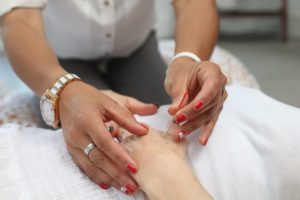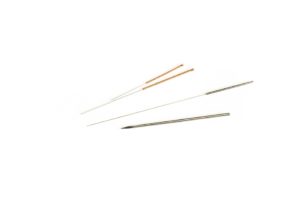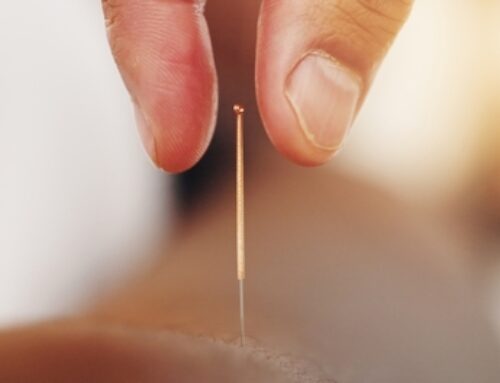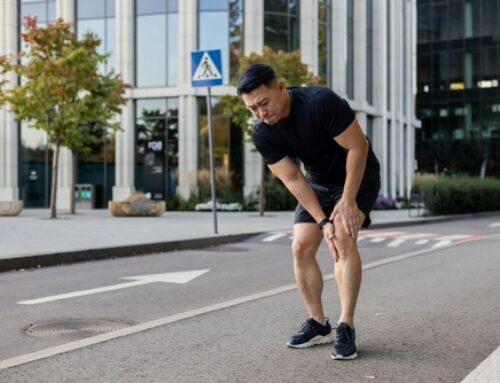Dry needling and acupuncture can be very helpful chiropractic tools. Dry needling is often administered WITH acupuncture during a routine acupuncture treatment. However, a full acupuncture treatment is not given when dry needling is only applied to a muscle. Acupuncture and dry needling, while using the same needles, are two very different treatments. Acupuncture is used for the diagnosis and treatment of pathological conditions including, visceral and
systemic dysfunction, while dry needling is used for the assessment and treatment of a myofascial pain syndrome due to myofascial trigger points. Acupuncture achieves pain relief through the release of endorphins and creating balance in the body’s energy levels. Through the release of serum cortisol, acupuncture can also have an anti-inflammatory effect. Dry needling achieves pain relief by inactivating trigger points and thus eliminating nociceptive focus of the muscle. The needles cause localized hemorrhaging which promotes healing by stimulating collagen and protein formation.
Dry needling, for mainly political reasons, has been segregated from it’s acupuncture roots so that non-acupuncturists can use this tool. This is unfortunate, because there are so many simple, safe, and effective acupuncture points and techniques that can be easily incorporated into dry needling; greatly enhancing it’s effectiveness. Dry needling is often learned by health practitioners in a short weekend seminar of 12-15 hours. This differs from those certified in acupuncture that study their craft for over 300 hours and have to hold a doctorate degree in medicine.
Simply explained, dry needling is the insertion of a needle into an area of pain with attempts to stimulate a muscle. Needles are only inserted into “Trigger Points,” which are tender spots or knots in muscles that when stimulated make them jump or contract. This can help temporarily with pain by tricking the body into releasing endorphins, the brain’s pain relieving neurotransmitters. Dry needling can break up muscle knots and trigger points, but often trigger points are not the sole cause of pain. Therefore, Dry needling usually works best as an adjunctive therapy. Dry needling is effective in stimulating endorphins and other opioids, but often does not affect the limbic system (part of the brain). This can cause the pain relief with dry needling to be short lived. The biggest downside of dry needling is that it is a “one size fits all” model. It works great for muscle pain but may do little for nerve pain, inflammation, or a hyperactive central nervous system.
When acupuncture is applied, points are often chosen in locations near and distal to the site of the pain. These “distal” points are chosen based off the patient’s total signs and symptoms reported. In Chinese medicine terms, these points might move energy away from the location or they might move energy to the location of pain. In Western medical acupuncture terms, points are chosen near major blood vessels or nerves near receptor pods that either emit a parasympathetic (rest and digest) or sympathetic signal (fight or flight). This has a more systemic effect helping to regulate hormones, neurotransmitter activity, organ function, systemic inflammation, and can change how the patient feels about their pain. Acupuncture tends to be a bit better at long-term pain relief.
Although personally I am a fan of dry needling and I use the technique often with acupuncture, I am saddened by the misrepresentation of both therapies. Both have their place. Dry needling can be safely and successfully administered by a trained practitioner, but be informed before you allow someone to utilize a therapy on you that can be potentially harmful. By taking advantage of the many well-established acupuncture points that are identical to myofascial, cutaneous, ligamentous, diffuse, and empirical trigger points, a practitioner certified in acupuncture may give a more rounded and effective treatment than a dry needling-only treatment.
Do you want to learn more about these two powerful treatment methods?
Come to our “Acupuncture and Dry Needling” class February 1.
The class starts promptly at 6:00pm and is free to the public. Registration is required and the class will be capped at 40 participants so we can effectively teach on this subject. Participants will have the opportunity to feel what acupuncture needle insertion is like and learn more about the theories and practices of acupuncture and dry needling. Register now if you and a friend would like to attend! More information can be found on our website, our Facebook page, or by calling our Roanoke, Virginia chiropractic office at 540-344-1055.

Daryl C. Rich, D.C., C.S.C.S.






